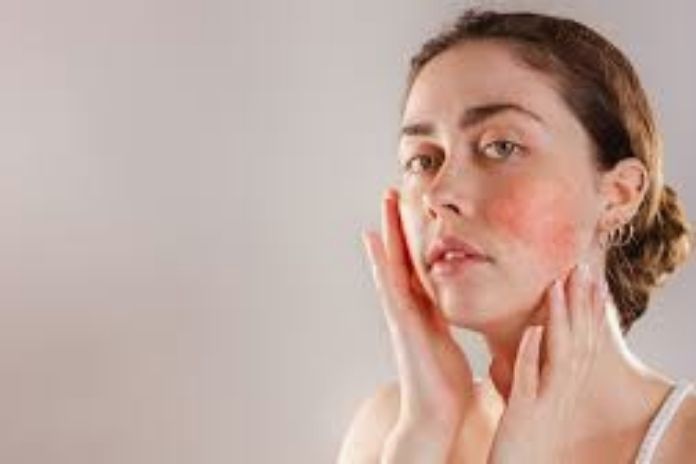If it is not uncommon to see some redness appear on the face in winter, it can sometimes be coupe rose or rosacea. Temperatures drop, and the most sensitive skins are put to the test. Your cheeks, nose, and forehead may turn red, and a feeling of heat may also be felt. However, this discomfort is not just temporary for some people. When the redness is persistent and leads to new symptoms, it is called couperose or rosacea.
What Is The Difference Between Redness, Couperose, And Rosacea?
To fully understand, these pathologies must be represented as different stages of the same disease.
- The redness addresses the “principal stage” of the infection. As we explained in our previous article on sensitive skin, redness is due to vasodilation, that is, the dilation of blood vessels located just below the skin. The influx of blood, triggered by different factors, then gives a red color to the skin.
- Rosacea is a “second stage” in the disease. A more exacerbated redness characterizes it. The vessels, visible to the naked eye, form small fine, individualized lines on the skin’s surface.
- Rosacea is the “last stage” of the disease but also the most complex because it has different particularities. What most characterizes rosacea is the appearance of skin lesions, usually papules, and pustules, on the skin’s surface, in addition to redness. It is often very unpleasant because the redness is more intense and persistent, as are heat or burning sensations. Rosacea can also cause real inflammatory flare-ups. The skin is then ultra-sensitive and very often changes type, being very oily and dry without explanation.
These pathologies often appear in the center of the face, on the cheeks, the nose, the forehead, or even the chin. They mainly affect fair-skinned people between 30 and 60, particularly women. In addition to being difficult to bear physically, this disease is difficult to handle psychologically for obvious reasons of an aesthetic nature (ugly and red face), just as can be severe acne in adolescents (cystic acne).
Why Do We Have Couperose And Rosacea?
The exact origin of the disease is not yet known, but doctors favor several avenues:
- Genetic inheritance;
- The environment and the way of life;
- Excessive presence of Demodex (skin mite);
- A disruption causes an extreme reaction in the vessels…
However, certain factors have been identified as triggering or aggravating rosacea, such as spices, alcohol, stress, intense physical effort, changes in temperature, exposure to the sun, or even certain substances ingested or applied to the skin, such as perfumes, alcohols, corticosteroids…
What Are The Treatments For Couperose And Rosacea?
Many medical treatments exist for creams, gels, lotions, antibiotics, lasers (used for rosacea for aesthetic purposes), or surgery in cases where the tissues of the face are damaged. Each stage of the disease and each person has its treatment because some remedies cannot be prescribed to pregnant women, for example. Therefore, we strongly advise you to consult a health professional, particularly a dermatologist, who can name the treatments adapted to your situation. These pathologies are real dermatological conditions that professionals must monitor and treat.
And Daily?
Many studies show that couperose and rosacea can manifest an underlying problem, often gastric, hepatic, or gynecological. It is important to make sure that there is no problem there. Choose a healthy and balanced diet, high in fiber and low in fat. Avoid hot drinks, spicy dishes, alcohol… You can also try to determine the foods that cause you to have rosacea flare-ups.
For cosmetics, adopt a simple cosmetic routine with fragrance-free and alcohol-free products that can dry out the skin. Care for sensitive skin like our Sweet Almond Oil will be your best ally to repair the skin outside of a crisis. For example, our Botanical Mist can also be ideal for soothing after make-up removal. Cleanse without rubbing and avoid so-called comedogenic products that will clog your pores. Control your physical activities, your time spent in a cold and hot atmosphere, and your exposure to the sun.
Read Also: Natural Solutions To Take Care Of My Dehydrated Skin

